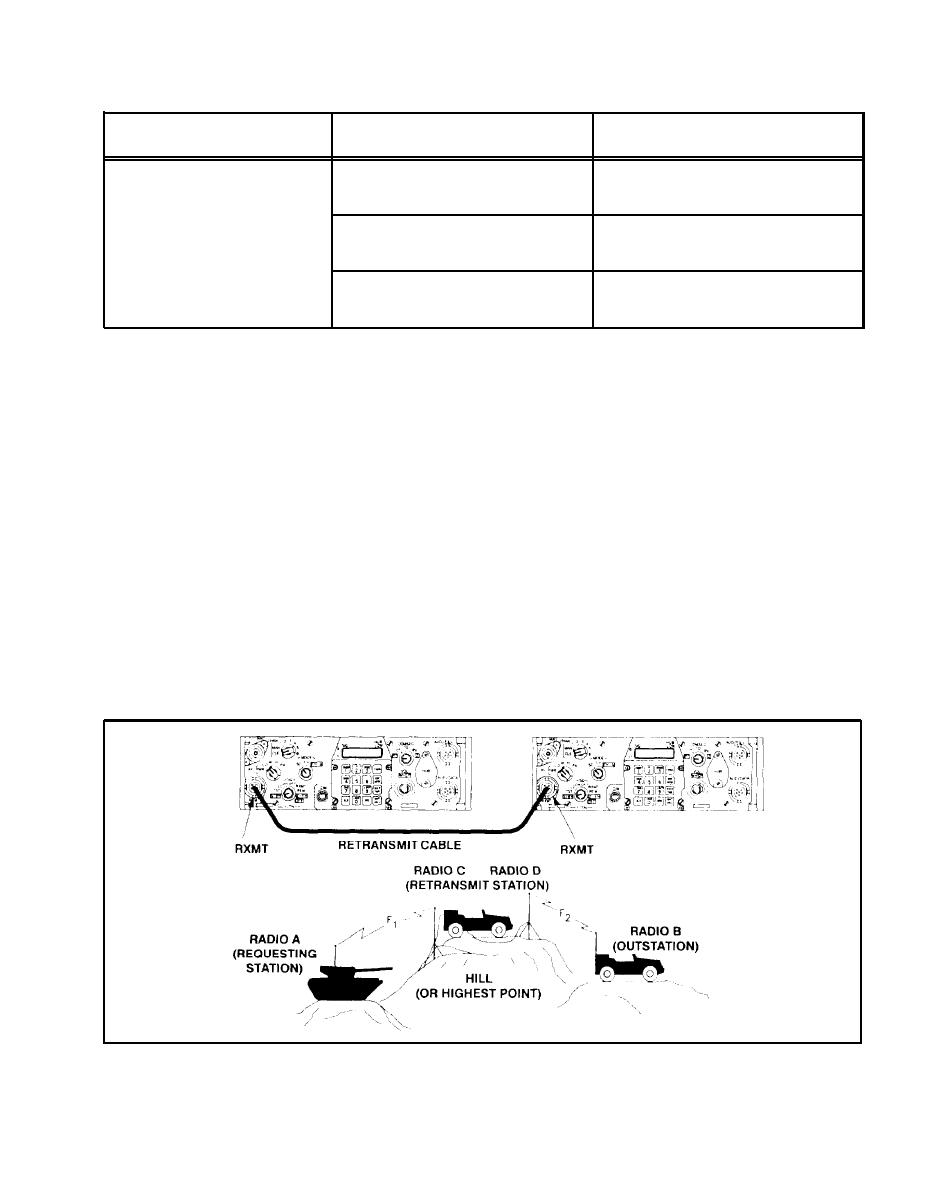 |
|||
|
|
|||
|
|
|||
| ||||||||||
|
|  TM 11-5820-890-10-8
SUBTASKS
ACTIONS
RESULTS
(4)
Set RT-D MODE to FH-M
(RT-D serves as NCS on F2;
ensure RT-B is in FH)
(5)
Set RT-C and RT-D
(See **** below for COMSEC
COMSEC to CT/PT****
switch requirements)
(6)
Request RT-A (NCS) call
RXMT mission is now being
RT-B using RXMT setup
performed*****
RXMT MODE: When ASIP radios are used at the RXMT site and are temporarily taken out of the
RXMT mode, the RXMT cable must be disconnected until the radios are placed back info a RXMT
mode.
*
RXMT may be performed as FH to FH, SC to SC, or mixed FH to SC. FH to SC mode is
particularly effective when communications between a SINCGARS net and a VRC Series-12, or
similar SC net, are required.
**
The use of two OE-254 antennas, separated as widely as feasible, may be required in
order to achieve line-of-sight communications.
***
See Special Operator Task 7 for the procedure regarding sending an ERF
****
RT-1523 version of the SINCGARS radio requires that COMSEC switches of RXMT
radios be set to PT for SC-SC and FH -SC communications. (Only the "SC" RT must be in PT.) If
the net is operating in CT, the RXMT operators can monitor only the FH portion of the traffic.
*****
In RXMT mode, RT-C and RT-D provide half-duplex communication. A handset or
speaker must be connected to both RXMT radios for both sides of a communication to be heard
by RXMT operators.
Figure 5-21. RXMT Operation
5-57
|
|
Privacy Statement - Press Release - Copyright Information. - Contact Us |